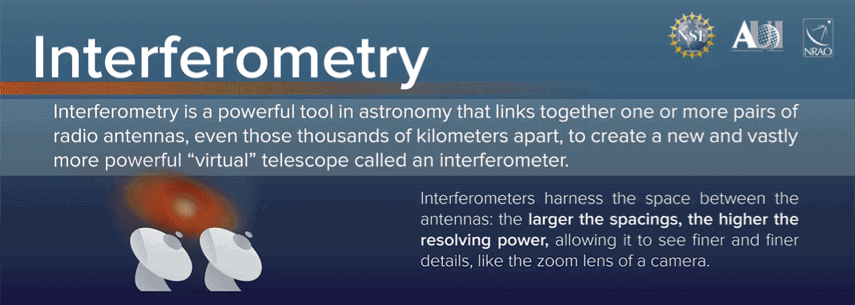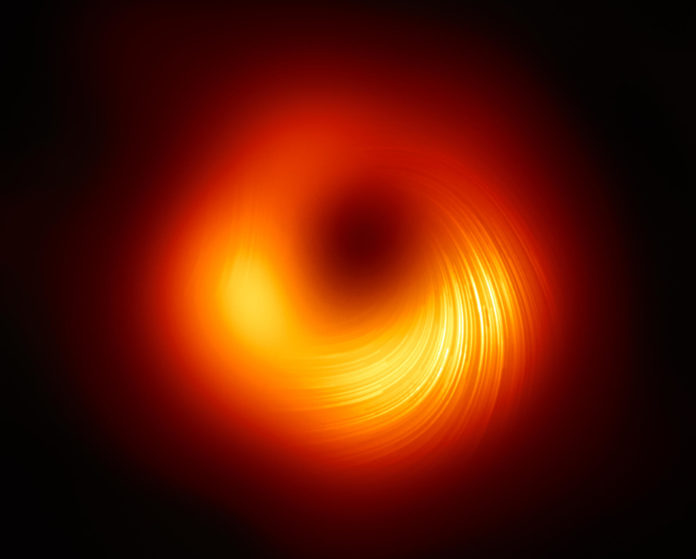In 2019, an international team of astronomers made history by producing the world’s first photo of a supermassive black hole. Now, thanks to years of research from those same scientists, that photo just got a major upgrade — one that may help astronomers piece together the biggest puzzles surrounding these mysterious objects.
The new photo was described in a series of papers published in The Astrophysical Journal, and included contributions from McGill University, the University of Waterloo, the University of Toronto, and the Canadian Institute for Advanced Research.
Shedding new light on a familiar black hole
Black holes are incredibly dense objects with incredibly strong gravitational fields — so strong, in fact, that not even light can escape if it gets too close. This makes them notoriously tricky to observe, but in 2019 a team of scientists leveraged combined observations from a network of telescopes around the world — effectively turning the entire Earth into a telescope.
This collaboration succeeded in capturing an image of the supermassive black hole lurking at the heart of a distant galaxy. The method is known as Very-Long Baseline Interferometry (VLBI), and it allows astronomers to create a virtual telescope that is equal in size to the distance between each individual telescope.

While that image answered many questions about black holes, there’s still a lot that astronomers don’t know. In particular, while astronomers know that this black hole — and many others — are shooting jets of material off into outer space, they don’t how exactly this material is able to escape the black hole’s strong gravitational field. They also aren’t sure what causes the beams to travel outwards in such a narrow path.
The long-standing theory has been that magnetic fields can counteract the attractive forces of the black hole’s gravity and propel material outwards in a narrow jet — but until now, very little was known about the exact nature of magnetism around black holes, or how strong these magnetic fields could really be.
This is where the Event Horizon Telescope (EHT) collaboration’s new image comes into play. The image provides a view of the supermassive black hole in polarized light, which allowed astronomers to map the magnetic field lines surrounding the black hole.
“This work is a major milestone,” said Iván Martí-Vidal, Coordinator of the EHT Polarimetry Working Group and GenT Distinguished Researcher at the Universitat de València, in a press release. “The polarization of light carries information that allows us to better understand the physics behind the image we saw in April 2019.”
What is polarization?
Light can become polarized when it passes through filters — for example, the polarized glasses you might be familiar with from watching a 3D movie. This causes the light to oscillate, or vibrate, in a single direction.
In space, light emitted from hot materials in the presence of a magnetic field can become polarized in a similar way. By observing this polarization, astronomers can learn about the strength of these magnetic fields as well as the environment surrounding them.
Unfortunately, observing polarized light from astronomical objects can be tricky. In this case, while the data being analyzed was the same that was used to create the original photo of the black hole, years of additional work were required to remove contaminating polarization from other sources and isolate the true polarization signal from the black hole.
“Misaligned antennas, imperfect polarization signal separation, and wavelength-dependent optical elements all result in mixing polarized and unpolarized emission — this mixing has the unfortunate effect of creating false polarization signals and corrupting real ones,” explained Avery Broderick, an astrophysicist at the University of Waterloo and the Perimeter Institute for Theoretical Physics, in a press release.
Strong magnetism is required to explain the observations
Once all of these potential sources of error were accounted for, the team was able to reveal the black hole’s polarized light and study the magnetic fields responsible. The lines shown in the new image represent the orientation of the polarization.
To account for this level of polarization, the gas surrounding the black hole’s event horizon must be strongly magnetized. This can help explain how the black hole is able to power its enormously strong jets.
“The observations suggest that the magnetic fields at the black hole’s edge are strong enough to push back on the hot gas and help it resist gravity’s pull,” explained Jason Dexter, Assistant Professor at the University of Colorado Boulder and Coordinator of the EHT Theory Working Group. “Only the gas that slips through the field can spiral inwards to the event horizon.”
The polarized-light image has provided astronomers with an entirely new view of black holes and the mysteries that surround them, but there’s still a lot left to uncover.
Future observations of this and other black holes in polarized light will help astronomers learn even more about these mysterious objects, potentially answering questions about how they form and evolve over time.










































